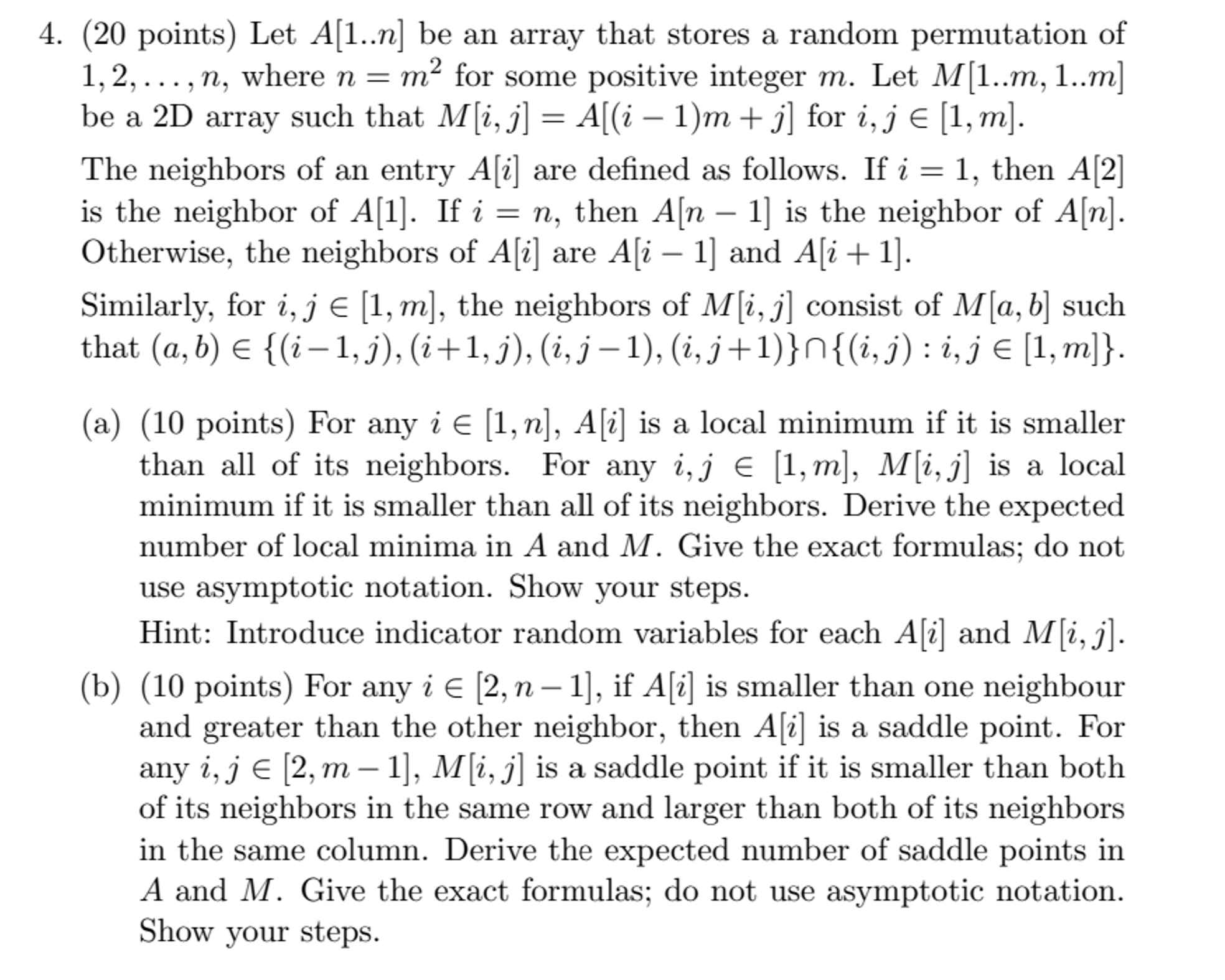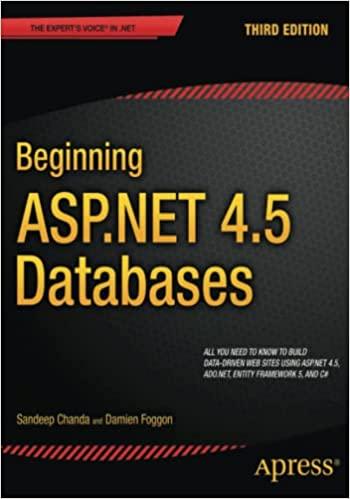Answered step by step
Verified Expert Solution
Question
1 Approved Answer
( 2 0 points ) Let A [ 1 . . n ] be an array that stores a random permutation of 1 , 2
points Let be an array that stores a random permutation of
dots, where for some positive integer Let
be a D array such that for jin
The neighbors of an entry are defined as follows. If then
is the neighbor of If then is the neighbor of
Otherwise, the neighbors of are and
Similarly, for jin the neighbors of consist of such
that :jin
a points For any iin is a local minimum if it is smaller
than all of its neighbors. For any jin is a local
minimum if it is smaller than all of its neighbors. Derive the expected
number of local minima in A and Give the exact formulas; do not
use asymptotic notation. Show your steps.
Hint: Introduce indicator random variables for each and
b points For any iin if is smaller than one neighbour
and greater than the other neighbor, then is a saddle point. For
any jin is a saddle point if is smaller than both
of its neighbors in the same row and larger than both of its neighbors
in the same column. Derive the expected number of saddle points in
A and Give the exact formulas; do not use asymptotic notation.
Show your steps.

Step by Step Solution
There are 3 Steps involved in it
Step: 1

Get Instant Access to Expert-Tailored Solutions
See step-by-step solutions with expert insights and AI powered tools for academic success
Step: 2

Step: 3

Ace Your Homework with AI
Get the answers you need in no time with our AI-driven, step-by-step assistance
Get Started


